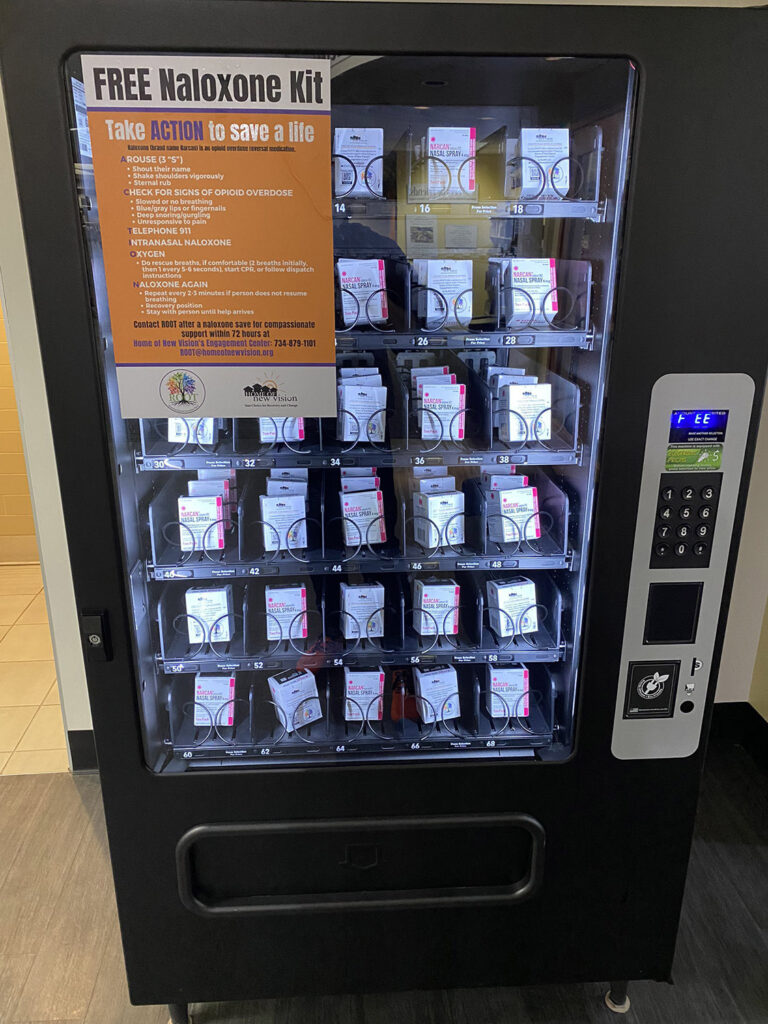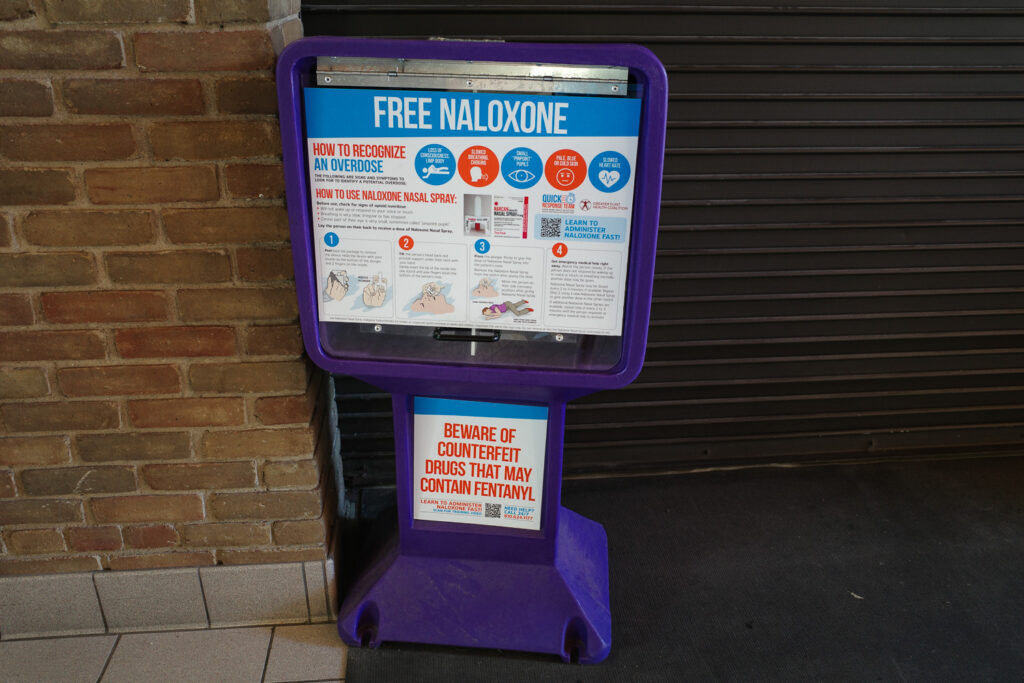The opioid epidemic has ravaged Michigan. Thousands of deaths each year, countless maimed and destroyed lives. Addicts in public visibly “fent folding” on corners. The crisis goes on and on, getting worse and worse, despite the millions of dollars spent every year to fix it. The government says it’s trying to solve the problem, but it’s failing.
In fact, public health officials have given up entirely. No mention of drug enforcement or rehab; instead, the focus has shifted to helping people use opioids without dying. Turns out, it’s far more lucrative to perpetually manage the crisis than to solve it.
Enter the new plan from the public-health bureaucrats—free Narcan vending machines on every street corner.
I first noticed one at a highway rest stop near Flint, conveniently placed next to the candy and pop machines. The Flint bus terminal has one as well, and they can’t even keep the thing stocked. A Traverse City nonprofit, Harm Reduction Michigan, recently turned dozens of former newspaper bins in Lansing into Narcan boxes. They’re popping up all over the place, with no end in sight.

These are just a small part of the much larger web of Narcan and opioid-related programs, with hundreds of millions of dollars backing them. The opioid crisis, it turns out, is rather lucrative for those who manage it. “Manage” being the key word here—the crisis is not an acute, temporary horror show, but a perpetual, ongoing crisis.
Narcan, for the unfamiliar, is the trademarked name of the drug Naloxone. It blocks the effects of opioid drugs like heroin and fentanyl. It’s primarily used as an antidote in the case of overdoses. In the case of a potentially deadly overdose, it is, indeed, a life-saving medication. It blocks the effects of the opioids, which in excess suppress a person’s heart rate and breathing, allowing them to recover and survive an overdose.
Narcan is a specific form of Naloxone, a nasal spray that can easily be administered in the case of an overdose. It doesn’t require injection, which is too difficult, or swallowing a pill, which is impossible for the overdosed. You simply spray it up the nose, and it counteracts the opioid. This makes it far easier for a third party to administer it on the fly.
Narcan is manufactured by Emergent Biosolutions, the sort of big pharma conglomerate one might expect. It’s one of their tent-pole products, along with an array of vaccines. Emergent manufactured nearly 150 million Covid vaccination doses during the pandemic, but in a major scandal, every single dose had to be scrapped due to contamination (which the company tried to hide). Emergent’s corporate board has also faced allegations, and a lawsuit, over insider trading.
Narcan earned $118 million for Emergent in Q1 of 2024 alone, an 18% jump over the previous quarter. Business is good, and look, this is America—we don’t begrudge anyone their profits, but suffice to say, Emergent has little interest in a decline in opioid use or a decline in government and nonprofit spending money on one of its top products.
Narcan is big business, not just for Emergent, but for the nonprofits that administer it. The state of Michigan alone will receive $800 million in funding over the next 18 years from legal settlements related to the opioid crisis, with half of that going directly to municipalities and half going to a new fund, the “Michigan Opioid Healing and Recovery Fund.” This will be used to fund the Narcan distribution program, along with a dizzying array of related local nonprofits and government programs. A few million here, a few thousand there—it all gets split up and sent down the pipeline.
In 2018, for example, the Michigan Health Endowment Fund awarded a nearly $500,000 grant to the Greater Flint Health Coalition for “The Genesee County Community-Wide Strategy To Address The Opioid Epidemic.” The goals of the program sound virtuous at face value: public awareness programs, training about using Narcan, distributing Narcan, etc. But when you read the line items in the budget, all you see are salaries. Nonprofit work doesn’t pay amazingly, but it sure does pay.

Local programs and municipalities are setting up the Narcan boxes and vending machines all over the state. Many of them, no doubt, have noble aims. They want to help people. Yet, it’s a double-edged sword. When your livelihood rests on solving a crisis, do you really want to solve it?
It’s the same dilemma for big pharma in general, and specifically for Emergent Biosolutions and Narcan. It’s more profitable in the long run to keep people sick, and sell them medicine that treats the symptoms, than to provide a cure itself.
The public Narcan machines are, in the end, simply the most visible sign of the managed crisis. A public-awareness campaign, as the bureaucrats say. In other words, a PR initiative for the lucrative crisis. The vending machines are little landmarks of the opioid crisis’s staying power and prominence, never intended to go away or get resolved.
Who has an incentive to solve it, in the end? Not the fentanyl smuggling cartels, or the pharmaceutical companies, or the government agencies, or the nonprofits with hundreds of millions of dollars trickling down to them.
They’ll put a box of Narcan on every street corner in the state, they’ll use every dollar they can possibly garner, and, in the end, it will do nothing to keep people from using fentanyl and heroin. That’s the point—make the crisis visible, make it perpetual, treat the symptoms, and cash the checks.
Bobby Mars is an artist, alter ego, and former art professor. Follow him on X @bobby_on_mars.

